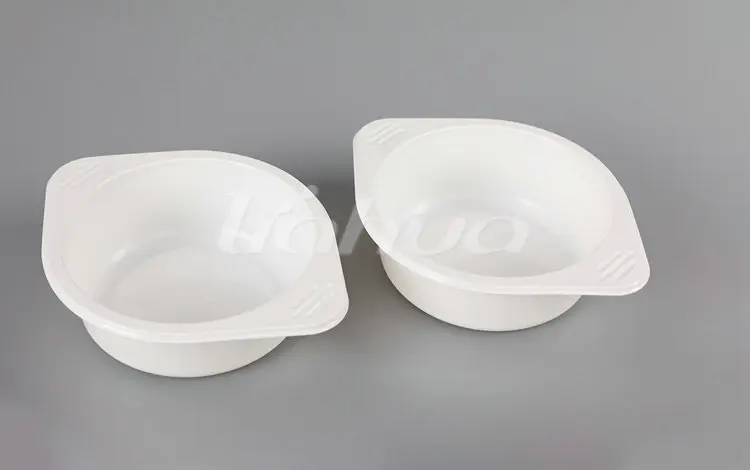0086 574 87739122
CPET trays offer excellent barrier properties against moisture and oxygen, ensuring the preservation of food quality and freshness. Here's how:
Moisture Barrier: CPET trays exhibit exceptional resistance to moisture transmission due to the crystalline structure of polyethylene terephthalate (PET) combined with the crystallization process during manufacturing. This inherent moisture barrier prevents water vapor from penetrating the tray material, effectively minimizing the risk of moisture migration between the food and the surrounding environment. As a result, CPET trays help preserve the natural moisture content of food products, preventing dehydration or sogginess while maintaining texture, freshness, and visual appeal over extended storage periods. This moisture barrier is particularly advantageous for packaged foods prone to moisture-related degradation, such as baked goods, cooked proteins, and fresh produce.
Oxygen Barrier: CPET trays offer robust barrier against oxygen ingress, primarily attributed to the dense molecular structure of PET and the crystallization process that enhances barrier properties. Oxygen barrier performance is critical for protecting food products from oxidative deterioration, which can lead to flavor loss, color changes, rancidity, and spoilage. By effectively blocking oxygen transmission, CPET trays help to create a protective atmosphere within the package, minimizing the exposure of oxygen-sensitive foods to oxidative reactions. This barrier capability extends the shelf life of packaged products, preserves their sensory attributes, and maintains product safety by reducing the risk of microbial growth and foodborne spoilage.
Gas Permeability: In addition to moisture and oxygen barriers, CPET trays exhibit low gas permeability, meaning they restrict the passage of gases such as carbon dioxide (CO2) and nitrogen (N2) through the packaging material. This property is essential for controlling the composition of the atmosphere surrounding the food, particularly in modified atmosphere packaging (MAP) applications. By regulating the levels of gases within the package, CPET trays help optimize the packaging environment to meet the specific needs of different food products, such as controlling respiration rates, inhibiting microbial growth, and preserving product freshness. The low gas permeability of CPET trays ensures that the desired atmosphere is maintained throughout storage and distribution, contributing to the overall quality and shelf stability of packaged foods.
Sealing Compatibility: CPET trays are designed to be compatible with various sealing methods, including heat sealing, induction sealing, and ultrasonic sealing, depending on the specific requirements of the application. The compatibility of CPET trays with sealing technologies ensures reliable closure and hermetic sealing of the package, effectively locking in the freshness and integrity of the packaged food. Proper sealing prevents the ingress of external contaminants, moisture, and oxygen, while also preserving the aroma, flavor, and nutritional value of the contents. The secure seal enhances product safety, minimizes the risk of leakage or contamination, and provides consumers with confidence in the quality and integrity of the packaged food.

Post Comment